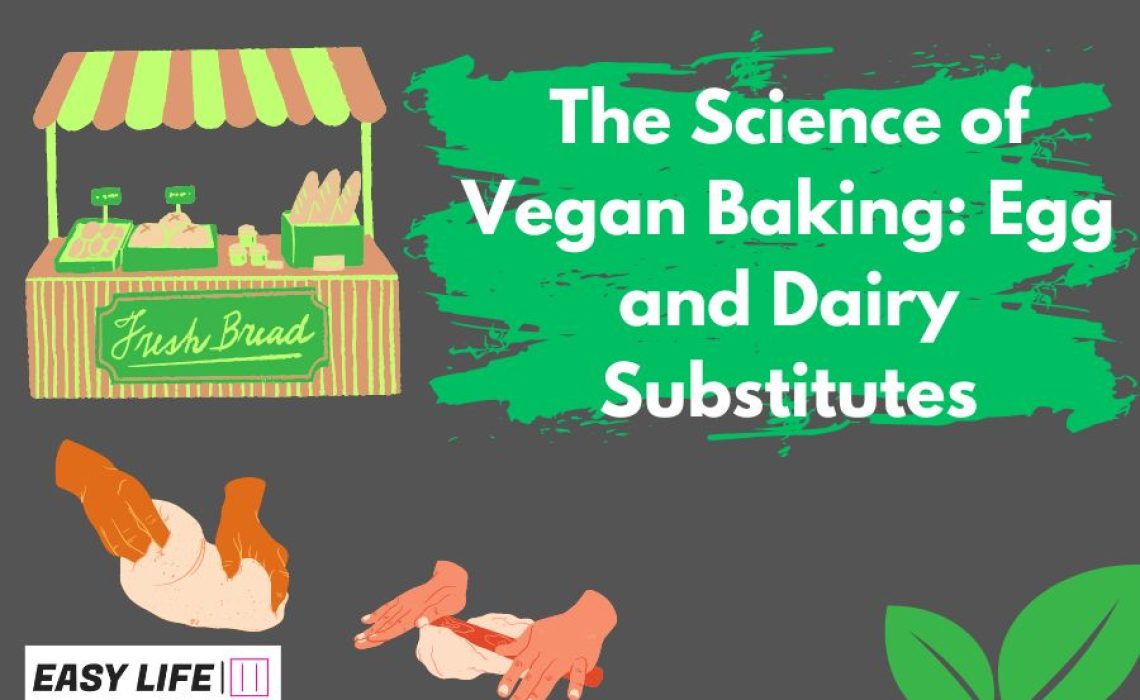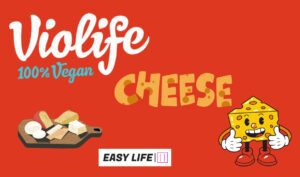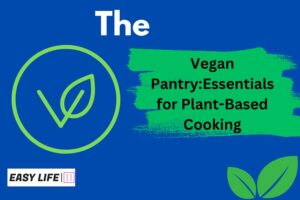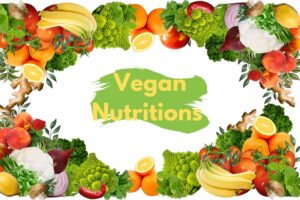Welcome to the exciting world of vegan baking! If you’ve always wondered how to create delicious baked goods without using any animal products, you’re in the right place. Vegan baking is not only possible but also can result in treats that are just as delicious, if not more so, than their non-vegan counterparts. The key lies in understanding the function of traditional baking ingredients like eggs and dairy, and how to replace them effectively with plant-based substitutes.
In this blog post, we will delve deep into the science of vegan baking, particularly focusing on egg and dairy substitutes. Whether you’re a seasoned baker looking to expand your skill set or a vegan newbie finding your way around the kitchen, this guide will provide valuable insights and tips for successful vegan baking. Let’s get started!
Table of Contents
ToggleThe Science of Vegan Baking
1. The Role of Eggs and Dairy in Traditional Baking
Before we dive into vegan substitutes, it’s essential to understand the roles that eggs and dairy products typically play in baking. Each ingredient in a recipe contributes to the final product’s texture, flavour, and appearance, so let’s break down why eggs and dairy are commonly used and what happens when we substitute them.
A. Functions of Eggs in Baking
Eggs are incredibly versatile and play several critical roles in traditional baking:
- Binding: Eggs help bind the ingredients together, giving the baked goods structure and stability.
- Leavening: When eggs are beaten or whipped, they incorporate air into the batter, which expands during baking, helping the baked goods rise and become light and fluffy.
- Moisture: Eggs provide moisture to the batter, contributing to the baked good’s texture and mouthfeel.
- Flavour and Color: Eggs also contribute to the flavour and colour of baked goods. The yolks, in particular, can give a rich taste and a golden hue to the final product.
B. Functions of Dairy in Baking
Dairy products, including milk, butter, and cream, also serve multiple purposes in baking:
- Tenderness: Dairy fats tenderize baked goods by shortening gluten strands, making the final product softer and more delicate.
- Moisture: Milk and other dairy products provide moisture, impacting the texture of the baked goods.
- Flavour: Dairy products contribute a rich, creamy flavour to baked goods. Butter, in particular, also contributes to the delightful, flaky layers in pastries.
- Browning: The sugars and proteins in dairy participate in the Maillard reaction during baking, contributing to the golden-brown crust in baked goods.
Now that we understand the roles that eggs and dairy play in traditional baking, we can discuss how to mimic these functions using vegan substitutes.
2. Common Vegan Substitutes for Eggs in Baking
When it comes to replacing eggs in vegan baking, the key is to identify the primary function the eggs play in the recipe—whether as a binder, leavening, or provider of moisture—and choose a substitute that can perform the same function. Here are some of the most common egg substitutes used in vegan baking:
A. Flaxseeds and Chia Seeds
Flaxseeds and chia seeds, when mixed with water, form a gel-like consistency similar to beaten eggs. This makes them excellent binders for baking recipes. They’re often used in recipes for brownies, muffins, and cookies.
B. Bananas and Applesauce
Bananas and applesauce can provide moisture and act as binders in recipes. They’re commonly used in cakes, muffins, and quick breads. However, they can impart their flavour to the final product, so they’re best used in recipes where their taste complements the other ingredients.
C. Silken Tofu
Silken tofu, when blended until smooth, has a creamy texture that can provide moisture and act as a binder. It’s relatively flavourless, making it a versatile substitute suitable for both sweet and savoury recipes.
D. Vinegar and Baking Powder
A combination of vinegar and baking powder can act as a leavening agent, creating a chemical reaction that produces carbon dioxide and helps baked goods rise. This mixture is often used in recipes for cakes and cupcakes.
E. Commercial Egg Replacers
Several brands offer powdered egg replacers made from various starches and leavening agents. These products are designed to mimic the binding and leavening properties of eggs without adding any distinct flavour to the recipe.
Each of these egg substitutes works best in specific types of recipes, and choosing the right one can make a significant difference in the success of your vegan baking endeavours. In the following sections, we’ll dive deeper into how these substitutes work and how to use them effectively.
3. Common Vegan Substitutes for Dairy in Baking
When substituting dairy products in vegan baking, it’s crucial to understand the desired attributes that dairy products bring, such as richness, moisture, and leavening. Here are some common vegan alternatives for dairy products in baking:
A. Plant-based Milk
There are various plant-based milk options available on the market, including soy milk, almond milk, oat milk, and rice milk. These can generally be used in a 1:1 ratio in place of cow’s milk in most baking recipes. The choice of plant-based milk can subtly affect the flavour and texture of your baked goods, so it might require some experimentation to find your preference.
B. Vegan Butter and Oils
Vegan butter and oils can substitute for butter in baking recipes. Many vegan butter substitutes are designed to mimic the fat content and texture of dairy butter, making them suitable for a wide range of baking applications. Coconut oil can also be a good substitute for butter in some recipes, especially those that benefit from a subtle coconut flavour.
C. Yogurt and Sour Cream Alternatives
Vegan yoghurts, typically made from almond, soy, or coconut milk, can replace dairy yoghurt in recipes. Similarly, vegan sour cream alternatives are available, or you can make your own by blending silken tofu with lemon juice for acidity.
Each of these dairy substitutes can bring unique flavours and textures to your baked goods. Some may work better than others in specific recipes, and part of the fun of vegan baking is experimenting with these options to discover what you like best. The upcoming sections will provide a deeper understanding of these substitutes and how to use them effectively.
4. The Science Behind Vegan Baking Substitutes
When you’re substituting vegan ingredients in baking, you’re essentially performing a culinary science experiment. Understanding the science behind these substitutes can help you predict their effects on your baked goods and make adjustments as needed.
A. How These Substitutes Emulate the Functions of Eggs and Dairy
The vegan substitutes for eggs and dairy work by emulating the functions of the traditional ingredients. For example:
- Binders like flaxseeds, chia seeds, and tofu form a gelatinous consistency when mixed with water, similar to the proteins in eggs, helping bind the ingredients together.
- Leavening agents like vinegar and baking powder create a chemical reaction that produces carbon dioxide gas, causing the baked goods to rise, similar to how eggs work.
- Moisture providers like bananas and applesauce add liquid to the batter, mimicking the role of eggs and milk in adding moisture.
B. The Role of Protein, Fats, and Carbohydrates in Vegan Substitutes
- Protein: In traditional baking, eggs provide protein, which gives structure to the baked goods. In vegan baking, other sources of protein, such as tofu or certain plant-based kinds of milk, can serve a similar function.
- Fats: Fats contribute to the richness, flavour, and texture of baked goods. Vegan butter and oils can provide these fats in vegan baking.
- Carbohydrates: Both traditional and vegan baking relies on carbohydrates for structure and sweetness. Ingredients like fruits (in the form of bananas or applesauce, for example) can provide natural sugars and additional binding power.
C. Effect of These Substitutes on the Texture, Taste, and Appearance of Baked Goods
- Texture: Vegan substitutes can impact the texture of baked goods. For example, using bananas or applesauce can result in a denser, more moist texture, while flaxseeds or chia seeds might result in a chewier texture.
- Taste: Some substitutes can also affect the taste of the final product. For instance, coconut oil or milk might impart a subtle coconut flavour.
- Appearance: The choice of vegan substitute can also affect the appearance of baked goods. For example, baked goods made with whole grain flour or flaxseeds may be darker than those made with white flour or eggs.
Understanding the science behind vegan baking can empower you to experiment and innovate, leading to delicious and satisfying results.
5. Tips for Successful Vegan Baking with Substitutes
Transitioning to vegan baking can be a bit of a learning curve, but with some tips and tricks up your sleeve, you can master the art in no time. Here are some suggestions for successful vegan baking with egg and dairy substitutes:
A. How to Choose the Right Substitute for Different Types of Baked Goods
- For recipes that require a lot of eggs (like custards or certain types of cakes), tofu or commercial egg replacers can be a good choice due to their neutral flavour and binding qualities.
- For cookies and brownies, flaxseeds or chia seeds can work well as they help provide a dense and chewy texture.
- For cakes and muffins that could benefit from added moisture and sweetness, bananas or applesauce might be your best bet.
B. Adjustments to Baking Times or Temperatures When Using Substitutes
- Vegan baked goods may sometimes require a bit longer baking time than their non-vegan counterparts, so keep an eye on them towards the end of the suggested baking time.
- If you find your vegan baked goods are browning too quickly, you might need to reduce the oven temperature slightly and increase the baking time.
C. Ensuring Nutritional Balance in Vegan Baking
- Remember that while vegan, baked goods should still be enjoyed in moderation as part of a balanced diet. Many vegan substitutes can be high in sugar or fat, so be mindful of the overall nutritional content of your recipes.
- Try to incorporate whole food substitutes where possible, like flaxseeds, chia seeds, or fruit purees, to add extra nutrients to your baked goods.
With these tips in mind, you’re well on your way to creating delicious vegan baked goods that everyone can enjoy. The most important thing is to have fun and experiment – the joy of vegan baking is in the creativity and the endless possibilities!
6. Delicious and Easy Vegan Baking Recipes
Now that we’ve explored the science and strategy behind successful vegan baking, it’s time to put that knowledge into action. Here are a few vegan baking recipes that showcase different egg and dairy substitutes. Don’t be afraid to make these recipes your own by adding your favourite flavours or mix-ins.
A. Fluffy Vegan Pancakes (Egg Substitute: Vinegar and Baking Powder)
Ingredients:
- 1 cup flour
- 1 tablespoon sugar
- 2 tablespoons baking powder
- 1/8 teaspoon salt
- 1 cup almond milk
- 2 tablespoons vegetable oil
- 1 teaspoon vanilla extract
- 1 tablespoon vinegar
B. Moist Vegan Banana Bread (Egg Substitute: Bananas, Dairy Substitute: Almond Milk)
Ingredients:
- 4 ripe bananas
- 1/3 cup melted coconut oil
- 1/2 cup sugar
- 1/4 cup almond milk
- 1 teaspoon vanilla extract
- 2 cups flour
- 1 teaspoon baking soda
- 1/4 teaspoon salt
- 1/2 cup vegan dark chocolate chips (optional)
C. Chewy Vegan Brownies (Egg Substitute: Flaxseed, Dairy Substitute: Vegan Butter)
Ingredients:
- 2 tablespoons flaxseed meal
- 6 tablespoons water
- 1 cup flour
- 1 cup sugar
- 1/2 cup unsweetened cocoa powder
- 1/2 teaspoon baking powder
- 1/2 teaspoon salt
- 1/2 cup vegan butter, melted
- 1 teaspoon vanilla extract
Each of these recipes demonstrates how to use a different combination of vegan substitutes to create delicious baked goods. Remember, the key to successful vegan baking is understanding the role of each ingredient and having fun with experimentation. Happy baking!
Conclusion: Science of Vegan Baking
Transitioning to vegan baking can seem daunting at first, especially given the vital roles that eggs and dairy play in traditional baking. However, as we’ve seen throughout this blog, with a bit of understanding and creativity, it’s entirely possible to create delicious, satisfying baked goods without any animal products.
The world of vegan baking is all about exploration and experimentation. By understanding the science behind baking and the roles that various ingredients play, you can begin to see each recipe as a starting point for your culinary creativity. Remember, the primary goal is not just to replicate non-vegan baked goods, but to create something that is delicious and enjoyable in its own right.
So whether you’re a seasoned vegan baker or just beginning your journey, remember to have fun with it. Baking is as much an art as it is a science, and every batch is an opportunity to learn and grow. Happy vegan baking!
References:
https://lifehacker.com/the-science-of-baking-in-one-graphic-1773384162
https://www.thekitchn.com/the-science-behind-whipping-egg-whites-in-copper-bowls-221943
https://www.aeb.org/food-manufacturers/egg-functionality/aeration-foaming-structure
https://fasteasybread.com/why-and-how-to-use-lecithin-in-baking-and-cooking/









